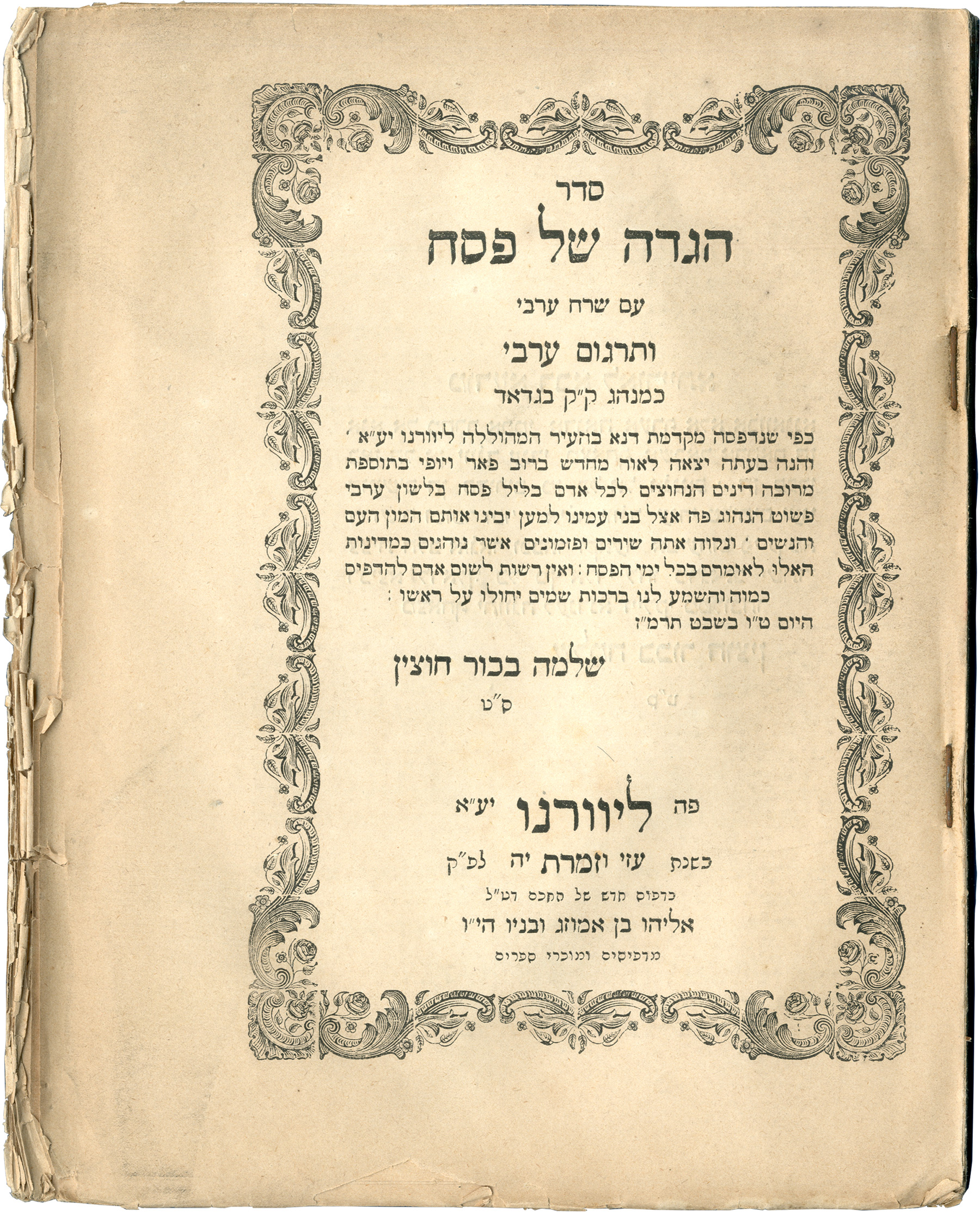An Italian rabbi, kabbalist, and thinker of Moroccan descent who lived in the Tuscan port city of Livorno, Elia Benamozegh (1823-1900) authored an abundance of works, encompassing exegesis, historical studies and various newspaper contributions, written in Hebrew, Italian and French. Through his posthumous masterwork, Israel and Humanity (1914), he significantly influenced the Christian-Jewish dialogue in Europe and rekindled the Noachide movement. In the books penned in French or Italian, brimming with references to Western philosophy and literature, he never made mention of his Oriental roots and rarely cited Sephardic contemporary authors. Yet his publishing activities situated him in the Middle East and North-African world. If various prayer books, spanning all Sephardic rituals, arguably signal a more commercial side of his activity, Benamozegh also showed perceptiveness with regards to his selection of Sephardic thinkers.
The catalogue of the volumes he published demonstrate his commitment to foster a sense of identity which embraces tradition in a modern key, as well as a sense of unity of Oriental Jews. And, because his endeavors displeased some more conservative actors, Benamozegh seems to have used his press as a way to publish his like-minded contemporaries, thus mapping out a landscape of modern Sephardic thought. This is certainly the case for the haggadah revised by Shelomoh Bekhor Hutsin (1843-1892) which Benamozegh published in 1887. This book, printed in Judeo-Arabic, Arabic, and Hebrew, according to the Baghdadi minhag (liturgical custom), lies at the juncture of tradition and modernity. Hutsin was a student of rabbi Abdallah Somekh (1813-1902) and a graduate of the very selective Yeshiva set up by Somekh, called Beth Zilkha, from which all the graduates became community leaders. Hutsin wrote liturgical works, numerous articles and was an advocate of a version of Jewish enlightenment that was respectful of Jewish values and modern culture. In 1863, Barukh Moshe Misrahi established the first press of Baghdad. In 1882 the activities ceased, only to be resumed by Hutsin in 1888– this is exactly in the interim that Benamozegh published this Haggadah. This cooperation seems to show that Benamozegh was in the know about both the business side but also the life of ideas in Baghdad; it is evidence of the sustained intense intellectual contacts in the Mediterranean and the Levant
